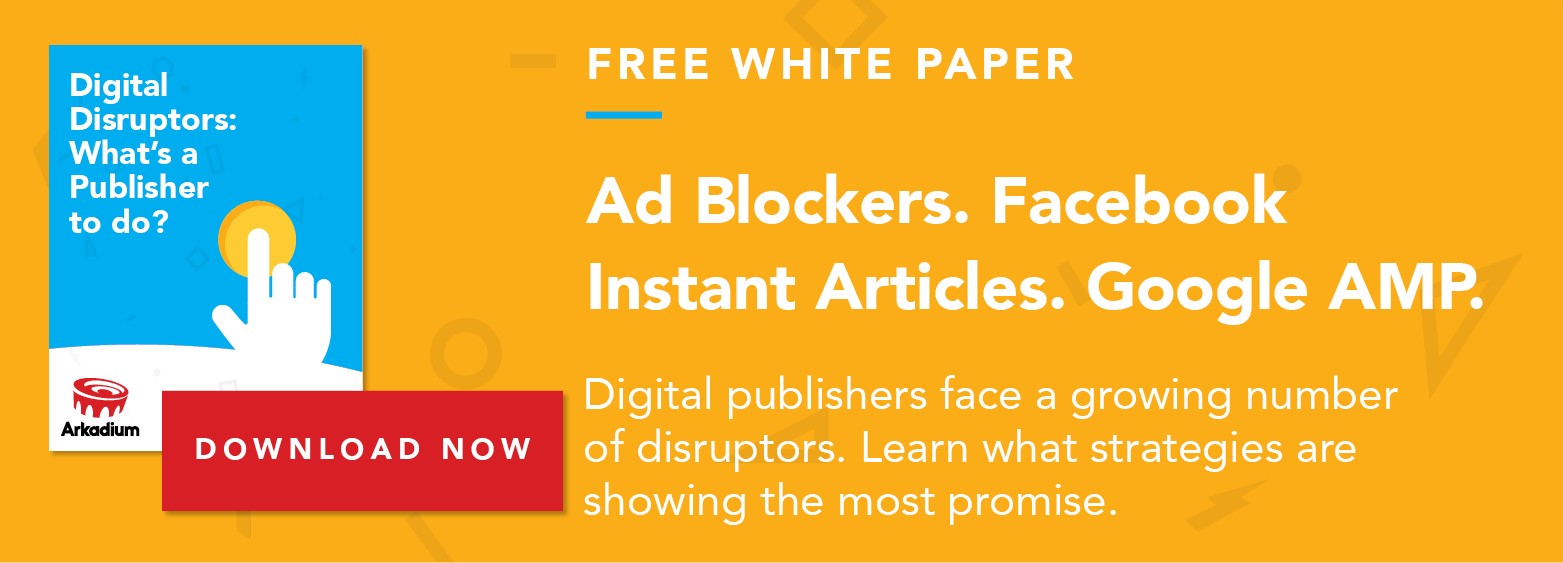How Artificial Intelligence is Helping in the War on Fake News

According to a 2016 study from the Pew Research Center, 62 percent of people get most of their news from social media.1
Alarmingly, and as the recent presidential election made aware, users are becoming increasingly exposed to the “fake news” that occupies those platforms — and they’re believing it.
An Ipsos Public Affairs survey found 75 percent of American adults believed fake news headlines they recognized to be accurate.2
What’s more, digital publishers fear their reliability and credibility are being tainted, as fake stories flood the media landscape.
“The damage of fake news is that you get valued less in that environment as a brand,” says Dominic Carter, chief commercial officer at News UK.3
Facebook, Google and even college universities are setting out to combat fake news. Their weapon of choice? Artificial intelligence.
Here is how AI is helping in the war on fake news.
Facebook has been widely criticized of perpetuating fake news through its Trending Topics feature — especially during the 2016 U.S. presidential election.
In an effort to counteract these accusations, the platform assigned human editors to fact-check trending articles around the site.
However, as Karan Singhal — creator of Fake News Detector AI — points out, “… fake news sites are popping up all of the time, and it’s insurmountably time-consuming and costly to check every site shared on Facebook.”4
For example, on average, there are 4.75 billion items shared by Facebook users each day.5
Any team — regardless of size — would have difficulty sorting through those billions of items. AI increases speed and efficiency by fact-checking articles and websites at scale.
Stephan Woerner, one of the computer science students working on creating a fake news detecting system at The WVU Reed College of Media, says, “Artificial intelligence can have all the same information as people, but it can address the volume of news and decipher validity without getting tired.”6
Additionally, AI can detect the semantic meaning behind an article, as well as similar traits found across fake news stories.
Catherine Lu, a product manager at fraud detection company DataVisor, says “A machine learning model can be trained to predict the reputation of a website, taking into account features such as the Alexa web rank and the domain name — for example, a .com domain is less suspicious than a .web domain.”7
And Ertunga Arsal, the CEO of German cybersecurity company ESNC, adds “An AI could use keyword analytics in discovering and flagging sensational words often used in fake news headlines.”8
In the future, Karen Singhal predicts his fake news detecting technology will be able to detect fake news at a higher level as the neural network learns more and its predictions become more accurate.
“The algorithm could learn to look at different factors, such as the reliability of certain journalists, to accomplish article-level checking,” he said.9
While AI’s future prospects are exciting to consider, it’s already being used in several present-day activities that are already making an impact.
As reported by Android Headlines, there are currently more than 100 active fact-checking websites using AI, including Google.10
In the U.S., Google introduced a Fact-Check Feature on both news.google.com and in the Google News and Weather applications on mobile and tablets.11 It has also supported newsrooms abroad, by funding almost 20 European projects aimed at fact-checking potentially false reports — including French newsrooms and two British groups looking to automatically fact-check online claims ahead of the country’s June 8 parliamentary election.12
While fake news continues to populate social platforms and threaten digital publishers’ trustworthiness, AI is, indeed, proving itself as a worthy tool to combat its spread.
1. Dellinger, AJ. “Fake News: Stanford Student Aims To Identify False Sites With Neural Networks.” International Business Times. N.p., 17 Jan. 2017. Web. 02 May 2017.
2. IBID
3. Chahal, Mindi. “The fake news effect and what it means for advertisers.” Marketing Week. N.p., 27 Mar. 2017. Web. 03 May 2017.
4. Dellinger, AJ. “Fake News: Stanford Student Aims To Identify False Sites With Neural Networks.” International Business Times. N.p., 17 Jan. 2017. Web. 02 May 2017.
5. Ho, Kevin. “41 Up-to-Date Facebook Facts and Stats.” Wishpond. Wishpond, 11 Apr. 2017. Web. 02 May 2017.
6. Saeed, Hira. “Can AI detect fake news?” VentureBeat. N.p., 01 May 2017. Web. 02 May 2017.
7. “How AI fights the war against fake news.” Fox News. FOX News Network, n.d. Web. 02 May 2017.
8. IBID
9. Dellinger, AJ. “Fake News: Stanford Student Aims To Identify False Sites With Neural Networks.” International Business Times. N.p., 17 Jan. 2017. Web. 02 May 2017.
10. Saeed, Hira. “Can AI detect fake news?” VentureBeat. N.p., 01 May 2017. Web. 02 May 2017.
11. IBID
12. Scott, Mark. “In Europe’s Election Season, Tech Vies to Fight Fake News.” The New York Times. The New York Times, 01 May 2017. Web. 02 May 2017.


